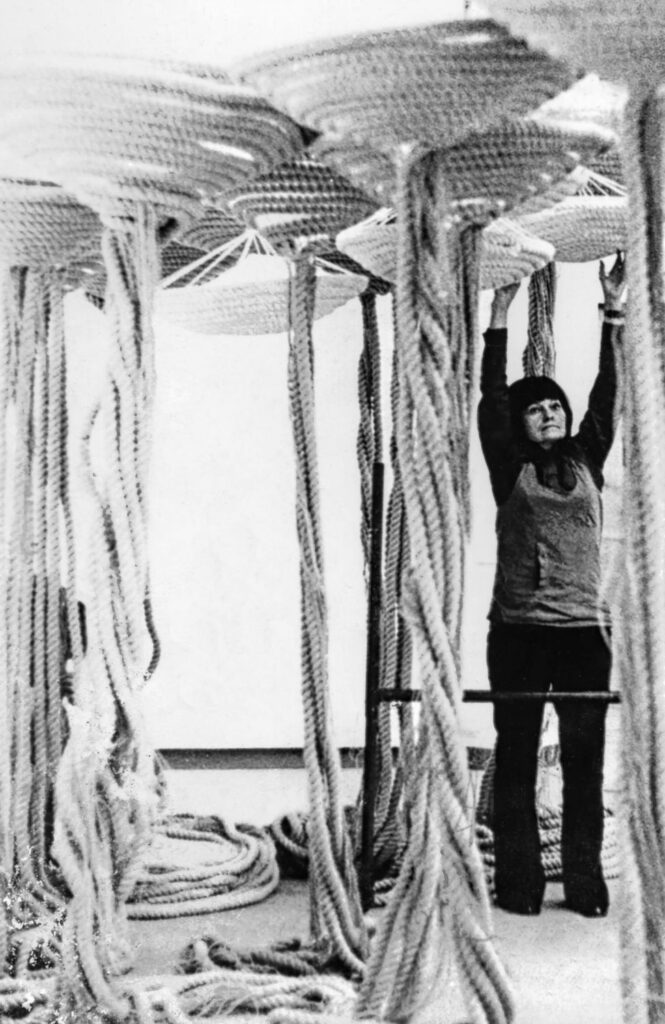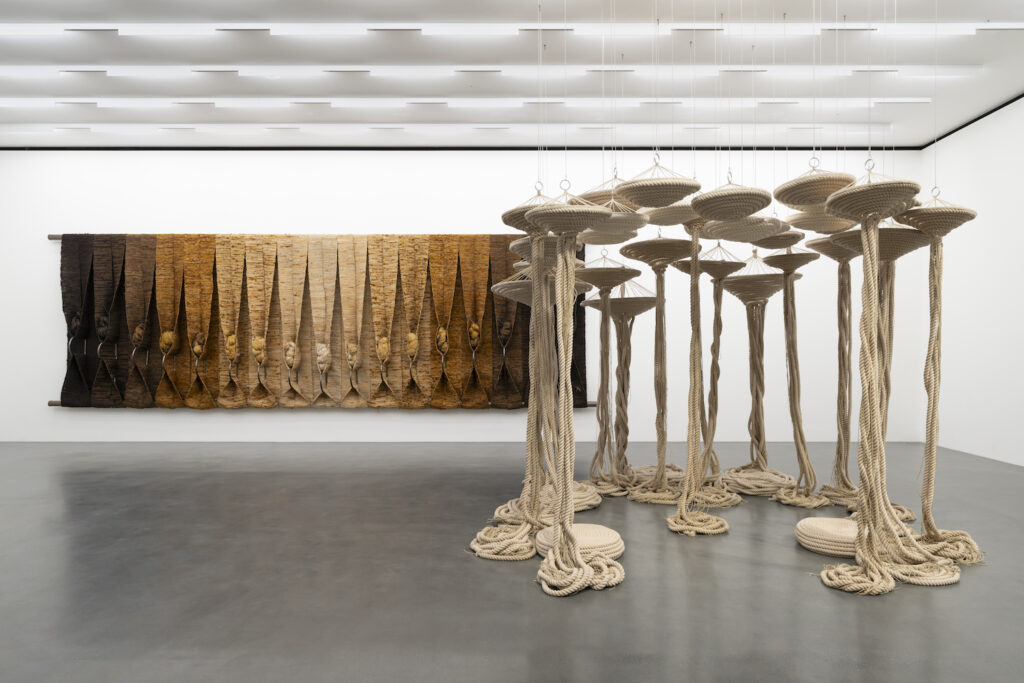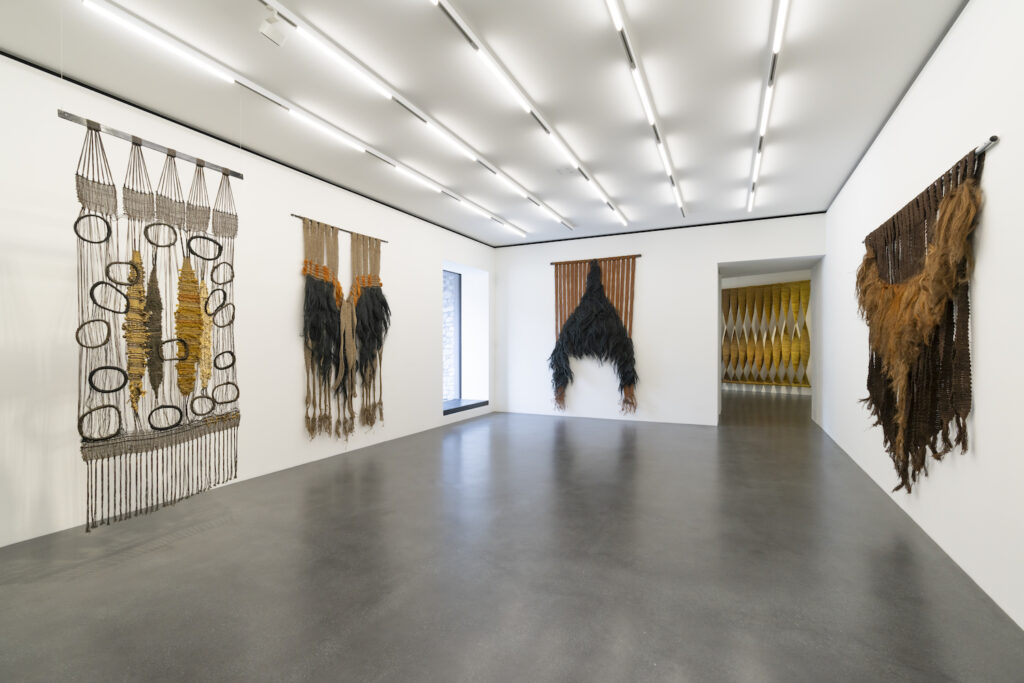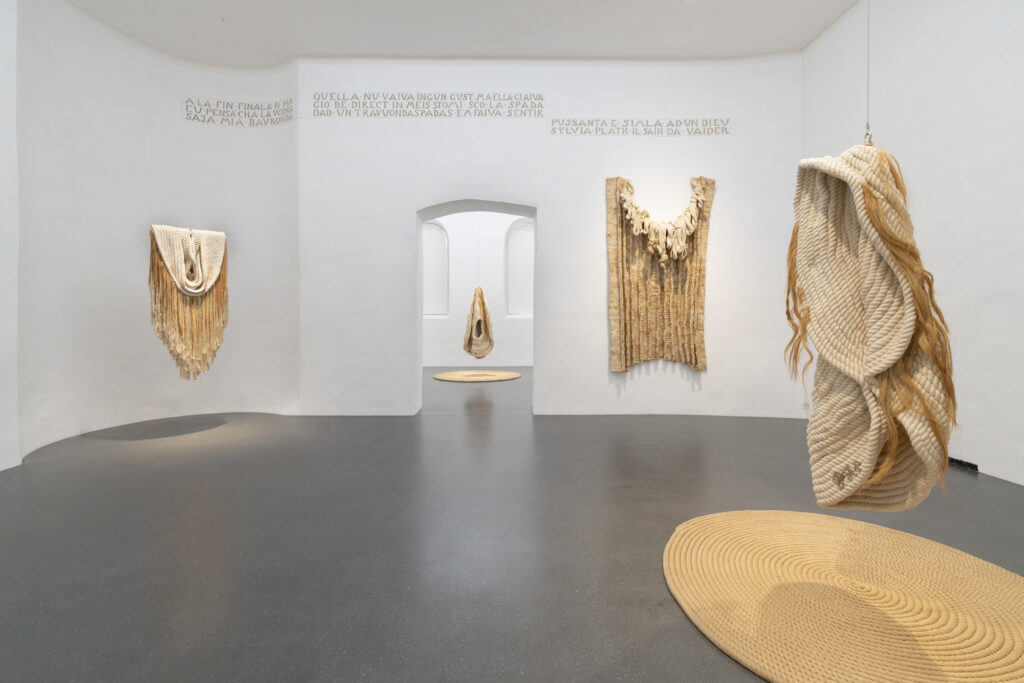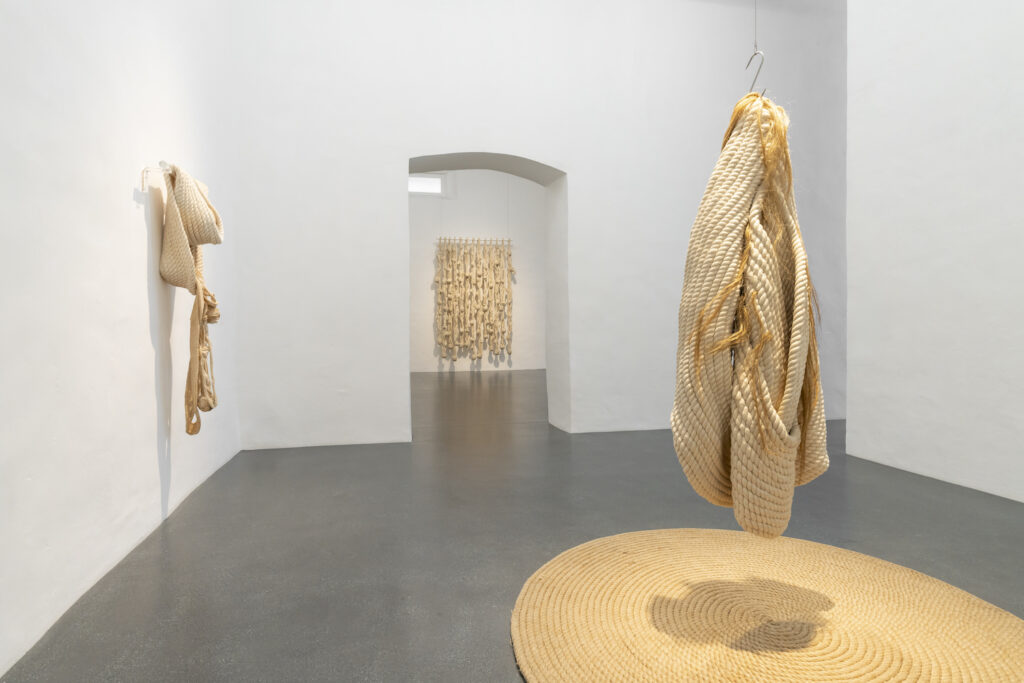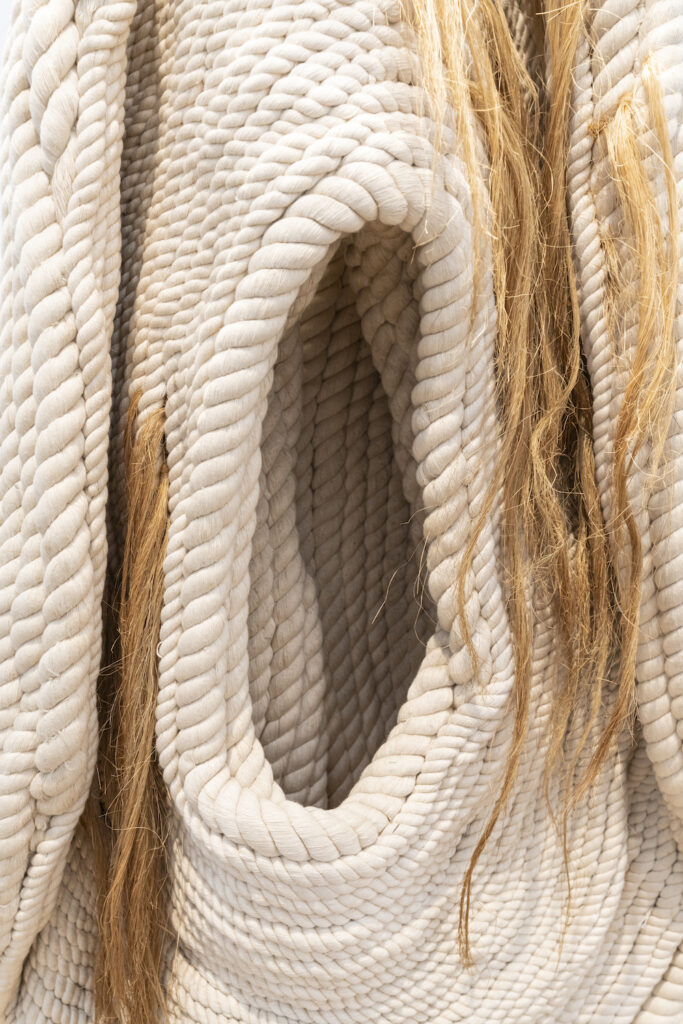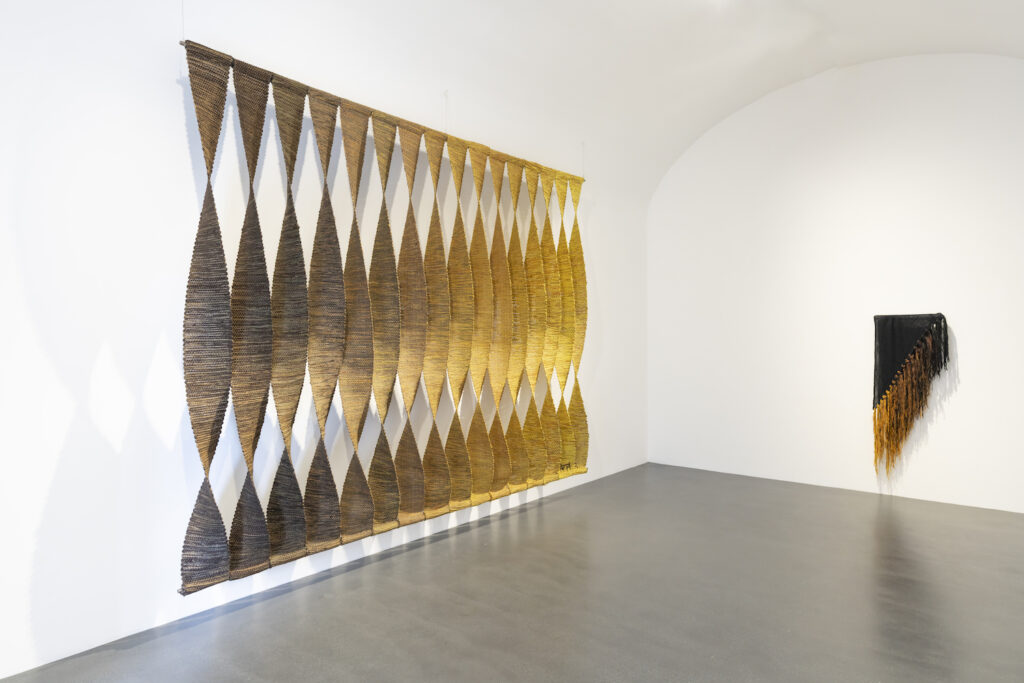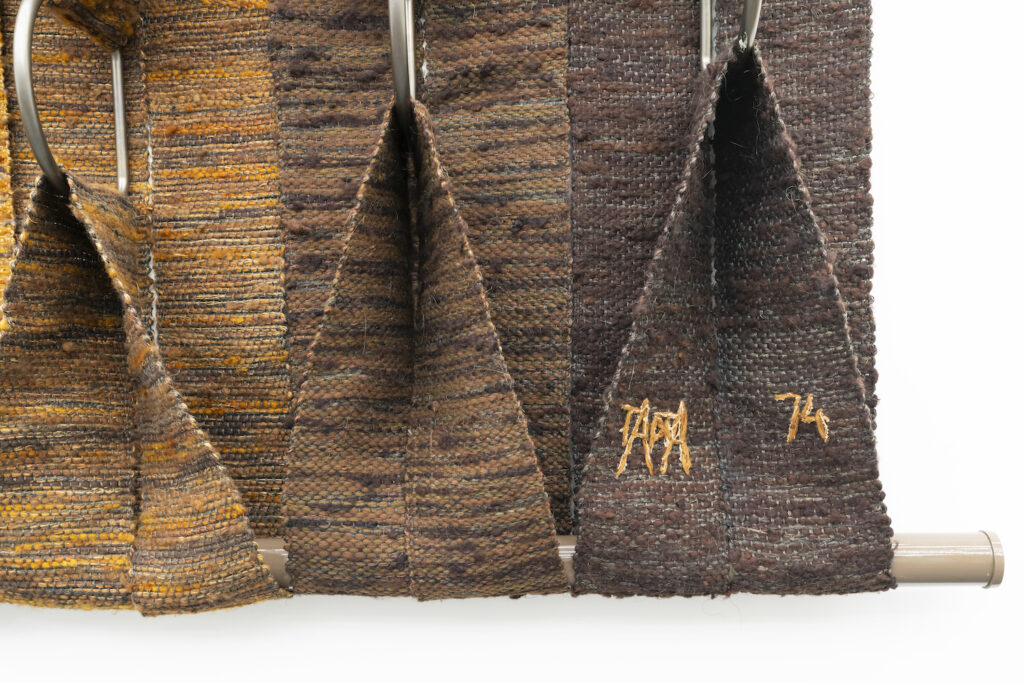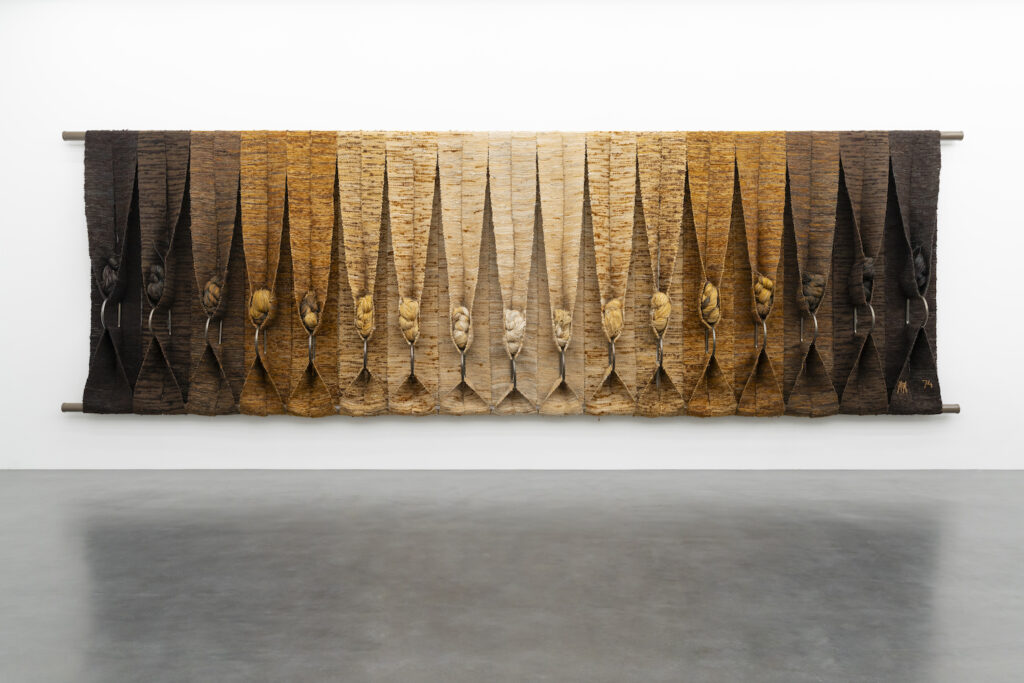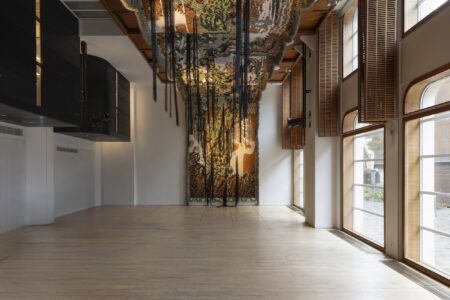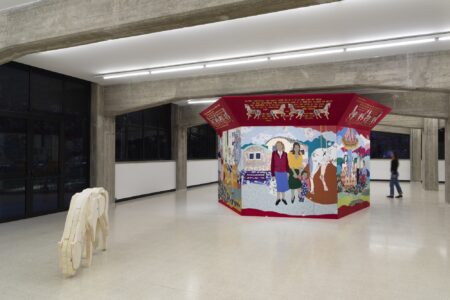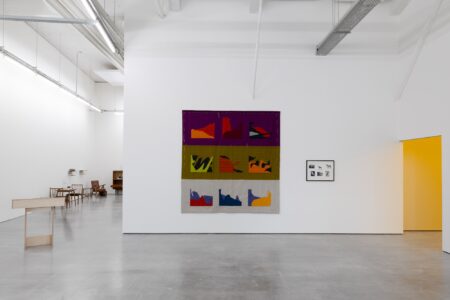Tapta: Flexible Forms
The Muzeum Susch presents Tapta: Flexible Forms, the first large-scale retrospective exhibition outside of Belgium of the Polish-born, Belgian based artist Maria Wierusz-Kowalska, known as Tapta.
The Muzeum Susch, a unique exhibition space opened in 2019 in the Engadin region of Switzerland, has a founding mission of “promoting the work of international avant-garde women artists who have been overlooked or misread and therefore not been positioned on equal footing with their male counterparts across art institutions around the world.” An ambitious mission, but one which will certainly be valuable and shed light on important artists. This is the case with “Tapta: Flexible Forms”, a comprehensive retrospective of the large-scale weavings and fibre-based ‘soft’ sculptures of the trailblazing, but little known (outside of Belgium) artist.
Maria Wierusz-Kowalska, born Maria Irena Boyé, in Poland in 1926, was known as Tapta throughout her life. The nickname Tapta came from an early childhood memory, “My older sister told me that once, as a little girl, I arranged all my toys in a beautiful circle and started to dance between them and sing: ‘I’m Tapta, Tapta, Tapta.’ The family liked it, and I became Tapta. Forever.” (Tapta, 1997). With her husband, Krzysztof, she fled to Belgium in 1945 as a political refugee, after taking part in the Warsaw Uprising of 1944. She studied weaving at the La Cambre National School of Visual Arts in Brussels, graduating in 1949. The couple moved to the Democratic Republic of the Congo (then known as the Belgian Congo), where they lived from 1950-1960. Returning to Brussels in 1960, Tapta began to focus on her artistic career, which focused on fibre-based sculptural works and large-scale weavings. Tapta was also a professor at La Cambre between 1976-1997, running the textile workshop until 1990, renaming it ‘flexible sculpture’, and helping to open up this medium to more contemporary regard and possibilities.
The title of the exhibition, “Flexible Forms”, connects to her ‘flexible’ or ‘soft’ sculptures and installations, which are meant for viewers to experience directly, moving and interacting with them in a very tactile and physical way. Installed in loose chronological order, the exhibition provides an engaging overview of Tapta’s work, divided into two parts: textile works made between 1960-early 1980s, and her later works in the 1980s-90s using neoprene.
Like several other artists working with weaving and fibre in the 1960s, such as Magdalena Abakanowicz or Sheila Hicks, Tapta began to work off-loom and away from traditional weaving, making 3-D sculptural works using ropes, knots, and other experimental techniques, creating very organic forms and volumes. A reconstructed version of her 1974 work, Forms for a Flexible Space, offers a unique opportunity to experience one of her ‘environments’ that she made during the 1970s. Applying her techniques and skills with textile works she began to make sculptures using black neoprene, an industrial, rubber-like material that added a new dimension to her flexible sculptural works. In addition, the exhibition features a selection of scale models of final large-scale works or trial versions, as well as archival documents and images.
“What’s my dream? To create softly formed places that envelop you and protect you from the outside world. They become zones of peace and friendship.
What’s my dream? To feel enveloped not only by these textile forms, but also by their extensions: large shadows on the walls. That’s when real and imaginary, past and future merge and you feel reconciled with everything.” (Tapta, 1974).
The exhibition is curated by Liesbeth Decan, who is a lecturer at LUCA School of Arts Brussels. Her research is focused on the work of Belgian avant-garde artists from the 1960s till the 1990s. A smaller iteration of this exhibition was seen at the WIELS, Brussels, in 2023 in the exhibition: Tapta: Espaces souples. With Greet Billet, Hana Miletić and Richard Venlet.
“Tapta: Flexible Forms” opened on July 20th and will be on view through November 3, 2024
www.muzeumsusch.ch
@muzeumsusch
